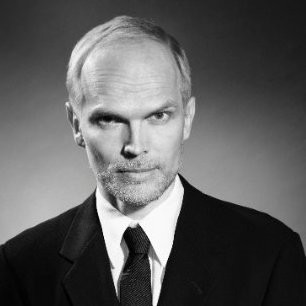Dr. Harri Valpola
Harri Valpola, Ph.D. is a Finnish expert in Machine Learning, Theoretical Neuroscience, and Cognitive Robotics and is the CEO of the Curious AI Company, which he cofounded in 2015. He is also one of the founders of ZenRobotics since 2007. Both of the companies commercialise the results of the research groups Harri has lead at Aalto University.
Harri’s research interests also include development of representations, cognitive architectures, neuro robotics, and artificial intelligence. His interest is also in Ecoenergy and has been, between 1999 and 2014, the managing director of Enespa, a company specialised in energy saving, and is a member of the board of executives in a private wind power company Lumituuli (Finnish for Snow wind). Among these he is also interested Social Issues and Languages.
His current research at the Curious AI Company focuses on combining unsupervised learning with currently successful supervised deep learning techniques. They are best known for the extensive work on semi-supervised machine learning, including the seminal paper on Ladder neural networks, and for the years of work on perception systems with research interests including machine attention, segmentation (with the published Tagger technology), and perceptual grouping. And last but not least, Curious AI is a forerunner in the field of autonomy with their research in e.g. model-based reinforcement learning and model-predictive control.
The Curious AI Company tackles the problems that stymied ZenRobotics, starting with the difficulty of the data. His method is simple: “The best way to clean dirty data is to get the computer to do it for you.” His first attempt was revealed in a paper published in 2015, which described a ladder network: a neural network that trained itself to deal with complicated situations by injecting noise into its results as it went along, like a teacher keeping her students on their toes by throwing mistakes into a test.
In 2007, Harri cofounded and became CEO of ZenRobotics (formerly Zendroid). They developed brain-inspired artificial intelligence with which robots can handle unstructured environments and tasks like recycling.
In the past, Harri has been active in Cognitive architecture, Denoising source separation, and Variational Bayesian learning
During 2009 and 2011, Harri was lecturing the course Information Processing in the Brain at Aalto University from Helsinki.
Between 2004 and 2010, he worked as Academy Research Fellow in the Laboratory of Computational Engineering (LCE lab) at Helsinki University of Technology.
In 2003, Harri did his Post-Doc research at the University of Zurich.
The starting points for Harri’s research have been the Self-Organising Map (SOM), which has been developed by Professor Teuvo Kohonen, and principal component analysis (PCA) methods, which has been studied by professor Erkki Oja.
From June 94 till May 95 he was doing simulations for Kohonen, who was studying Adaptive-Subspace SOM (ASSOM) feature extraction algorithm, which is designed to find invariant features. It was first published in T. Kohonen, Self-Organising Maps, 1995.
In May 96 Harri earned his Master’s Degree of Science with his thesis A computationally efficient algorithm for finding sparse codes. It is a scheme for representing information, where a small number of units out of a large pool is used to describe each sample. It combines many good sides of vector quantisation and PCA while avoiding most of their drawbacks. Many people have studied the subject, but the best algorithms have been computationally expensive. The complexity of his algorithm is linearly proportional to the input dimension and to the number of neurons. The paper was published in ICNN’96, as Soft multiple winners for sparse feature extraction.
Harri earned his Ph.D. in Physics, Mathematics, and Neural Networks in 2000, with his thesis Bayesian Ensemble Learning for Nonlinear Factor Analysis, and the application of a variational Bayesian method called ensemble learning for unsupervised learning, with focus on nonlinear factor analysis.
Harri’s name used to be Harri Lappalainen. On the 12th of May, 2000, he got married with Lotta Lehtelä and they took Valpola as the name of their family.
Read some of Harri’s most cited publications:
- Semi-Supervised Learning with Ladder Networks, 2015
- Ensemble learning, 2000
- Bayesian non-linear independent component analysis by multi-layer perceptrons, 2000
- Self-organized formation of various invariant-feature filters in the adaptive-subspace SOM, 1997
- Denoising Source Separation, 2005
- An unsupervised ensemble learning method for nonlinear dynamic state-space models, 2002
- Deep learning made easier by linear transformations in perceptrons, 2012
- Weight-averaged consistency targets improve semi-supervised deep learning results, 2017
Watch ZenRobotics – Next Generation ZenRobotics Recycler – robotic sorting station.
Read the Wired Interview with Harri, where he talks about the AI he is building:
“The AI that we are building,” Valpola says, “will have such a good model, not just of how to build paper clips but also what we humans are thinking. Theory of mind. It’s an age old problem: how to lead a good life. And I think AI will understand this problem.”
“In the first wave of AI you had to be a programmer. In the second wave of AI you have to be a data scientist. The third wave of AI — the more moral you are the better.”
Watch his TEDxHelsinki Talk, Can we build human-like AI? Should we?
Watch Harri, talking about Augmenting Human Capabilities to New Dimensions to the audience at Slush 2017, and Helsinki’s Secret Sauce in Learning at Slush 2015.
Watch more of his Videos here.
Visit his LinkedIn profile, dblp page, his homepage. Follow him on Google Scholar, ResearchGate, and at ICS Aalto page.
